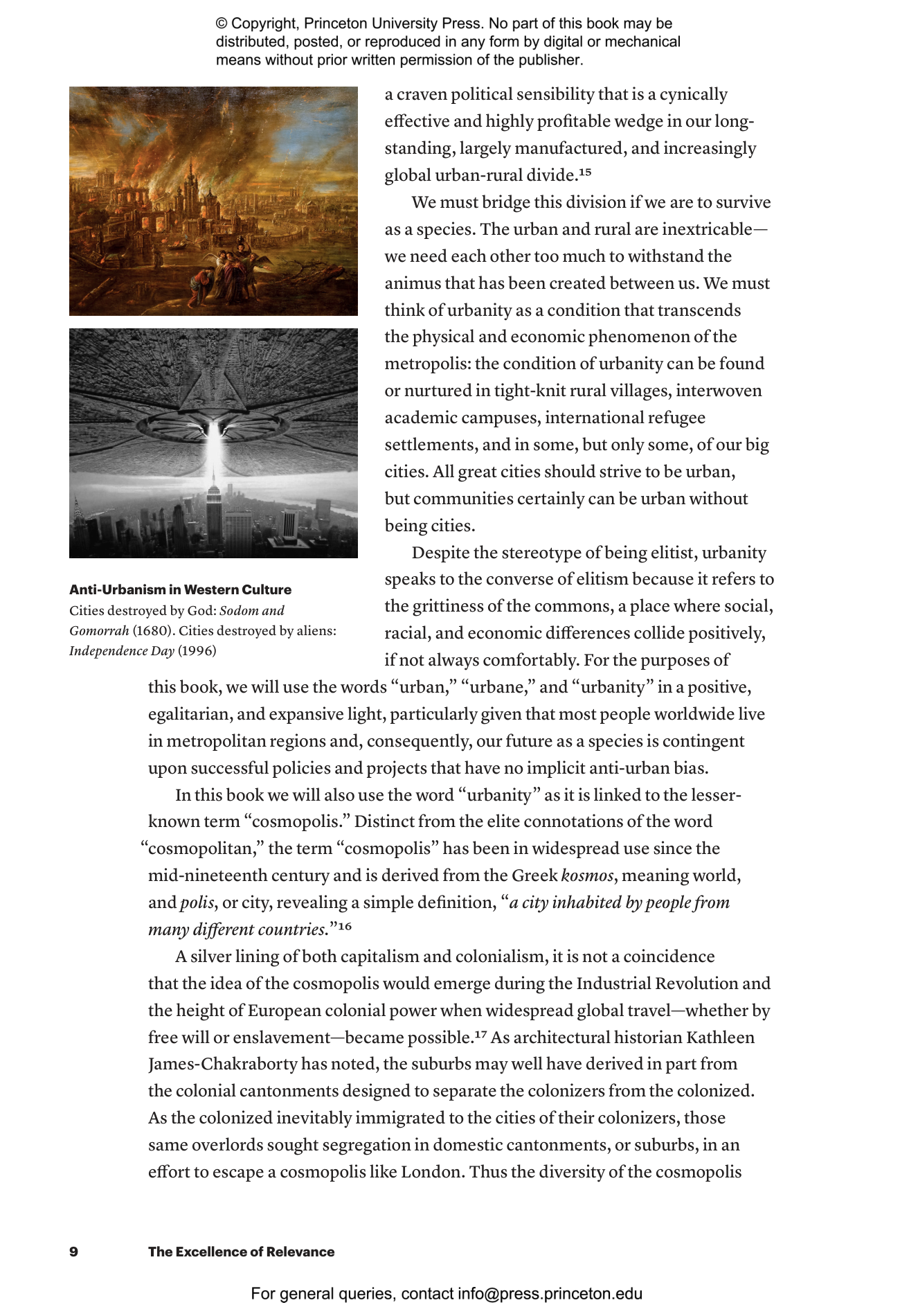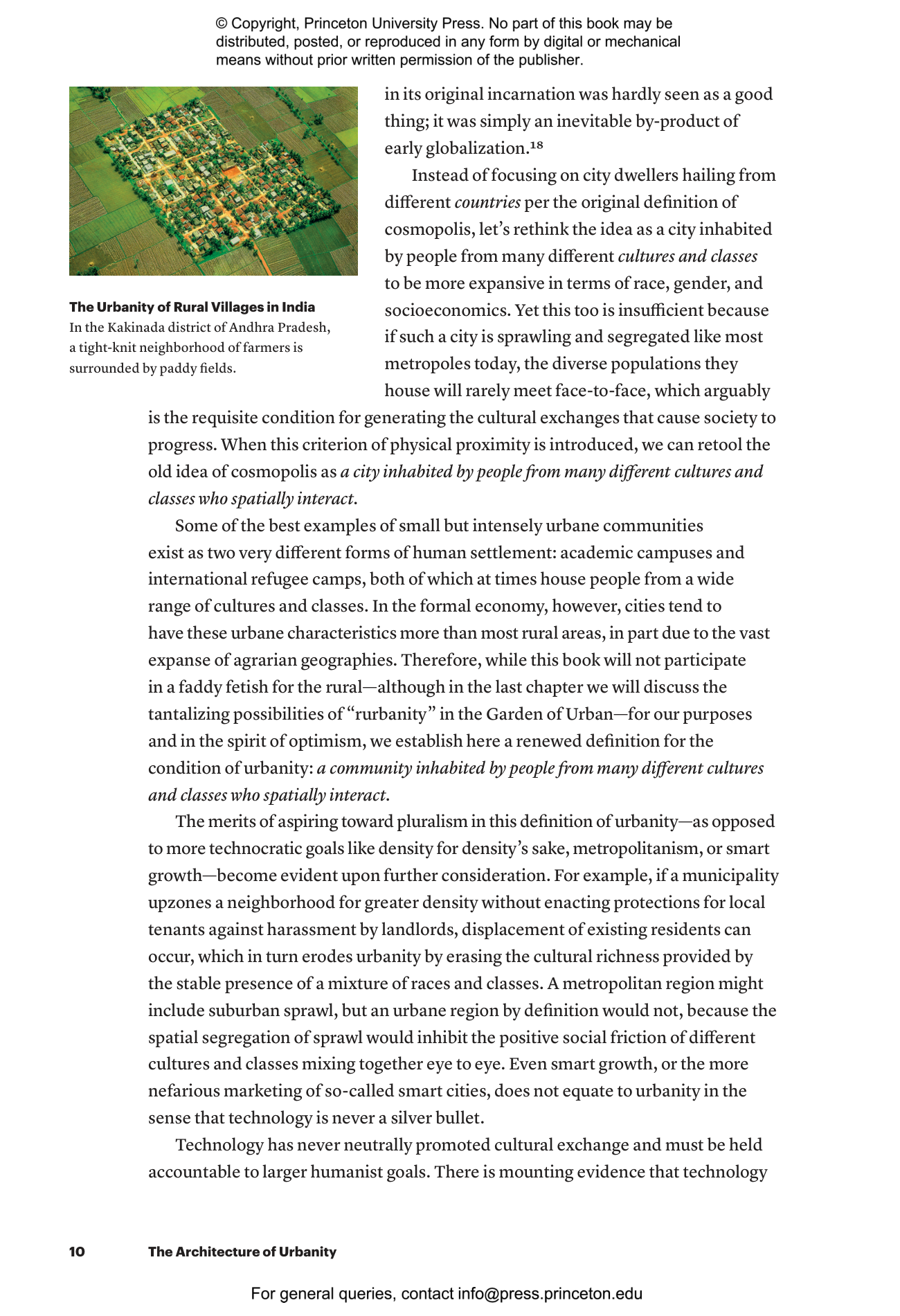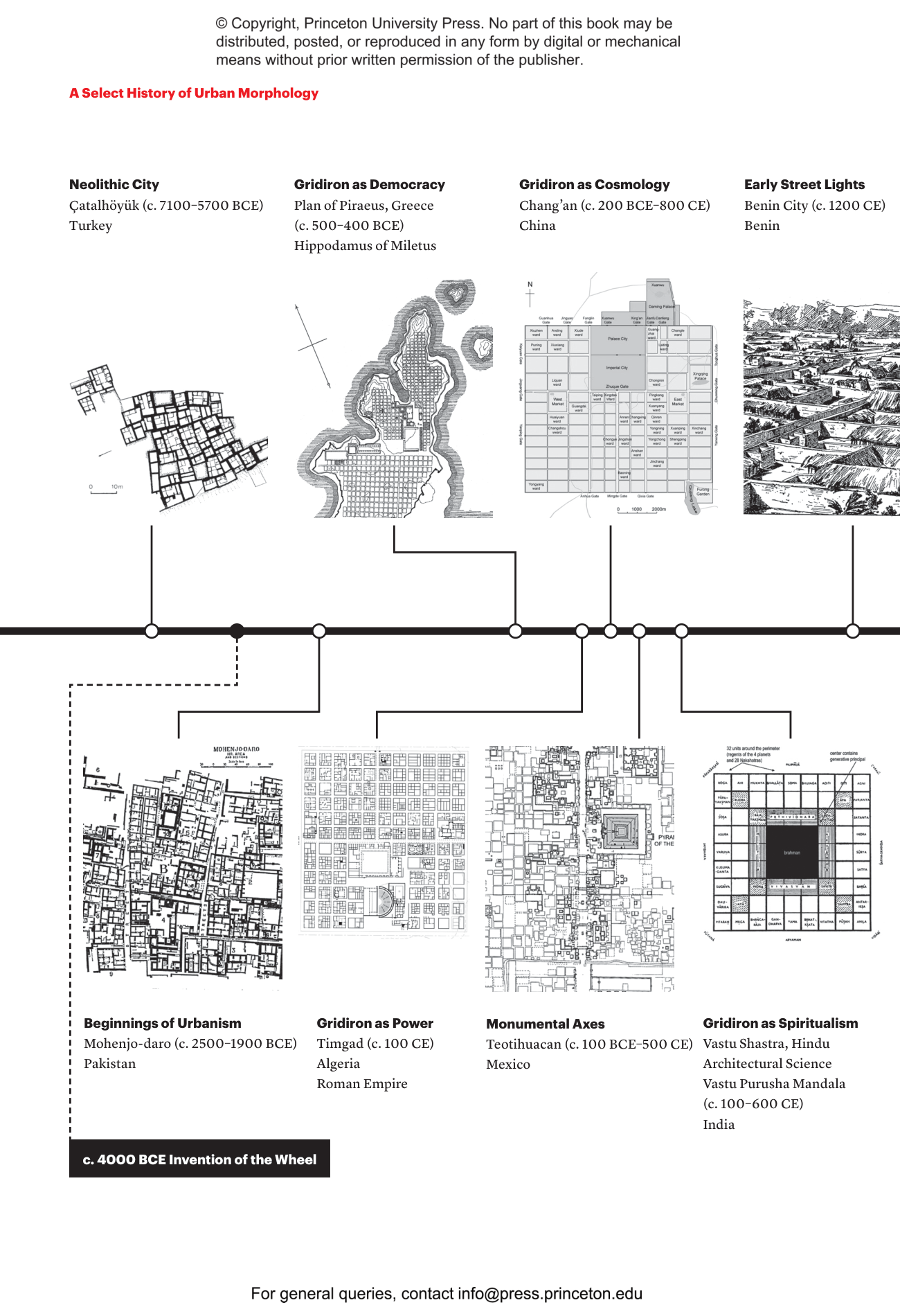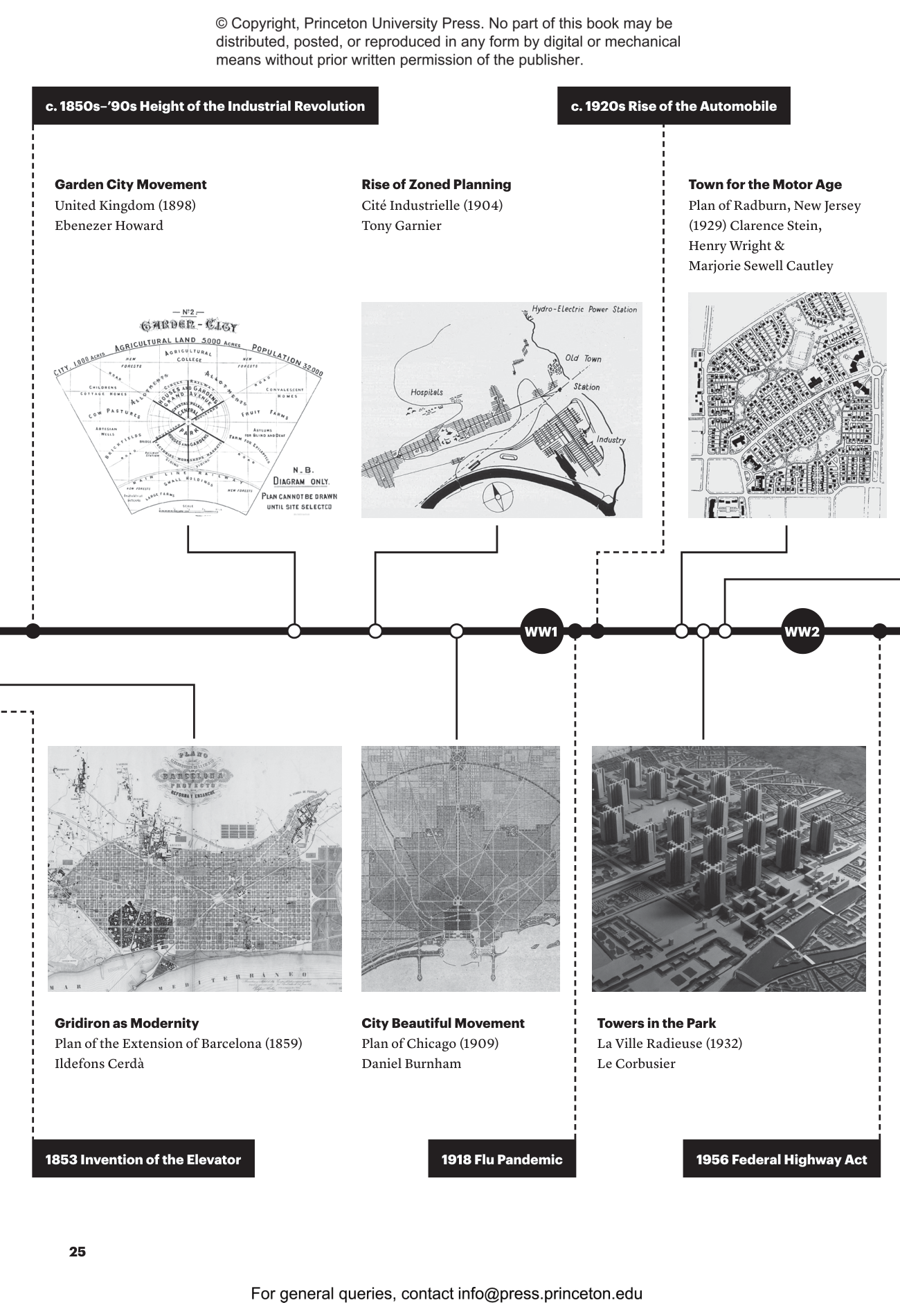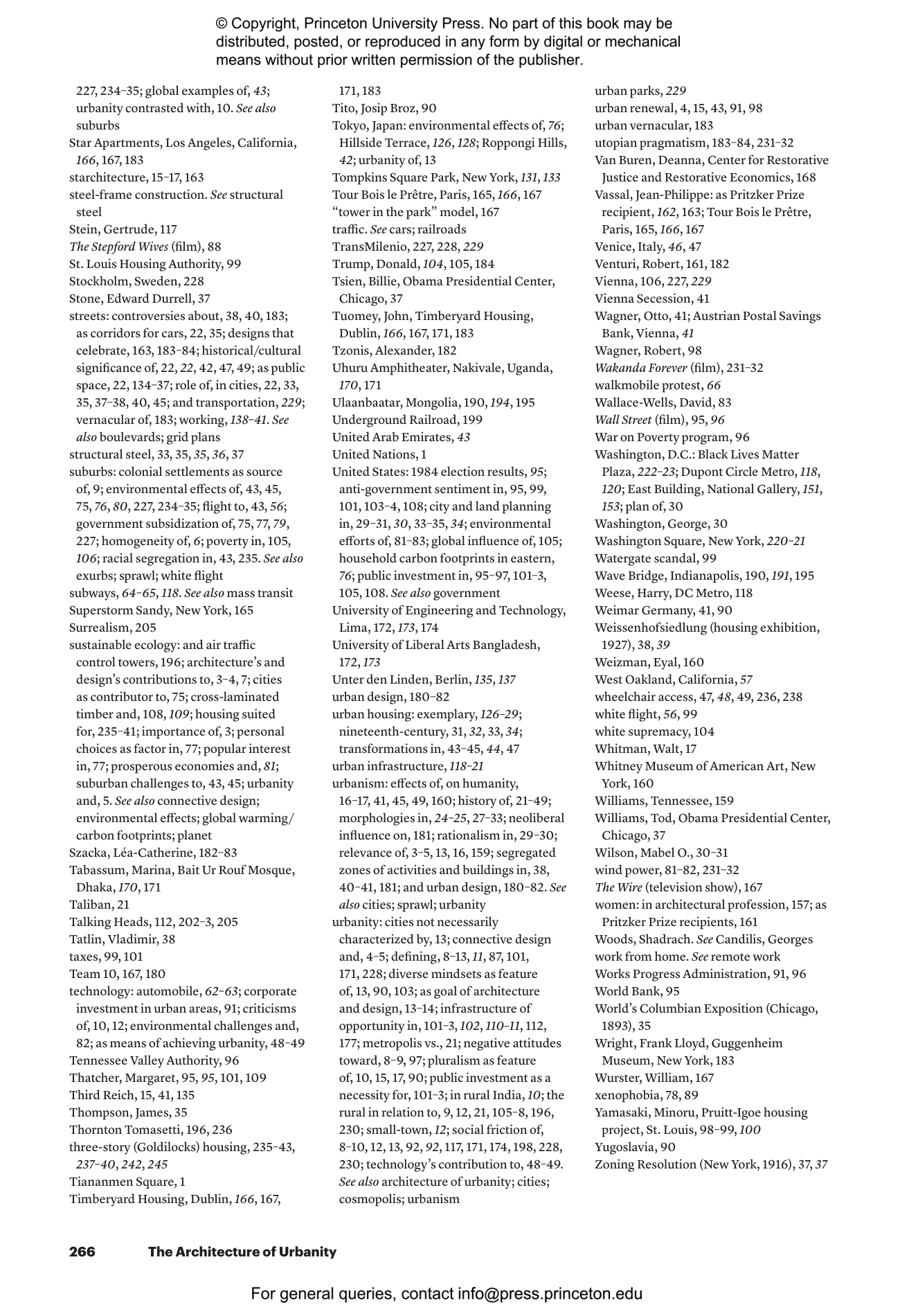The world is facing unprecedented challenges, from climate change and population growth, to political division and technological dislocation, to declining mental health and fraying cultural fabric. With most of the planet’s population now living in urban environments, cities are the spaces where we have the greatest potential to confront and address these problems. In this visionary book, Vishaan Chakrabarti argues for an “architecture of urbanity,” showing how the design of our communities can create a more equitable, sustainable, and joyous future for us all.
Taking readers from the great cities of antiquity to the worldwide exurban sprawl of our postindustrial age, Chakrabarti examines architecture’s relationship to history’s greatest social, technological, and environmental dilemmas. He then presents a rich selection of work by a global array of practicing architects, demonstrating how innovative design can dramatically improve life in big cities and small settlements around the world, from campuses and refugee camps to mega-cities like São Paulo, Lima, Los Angeles, New York, Paris, and Tokyo.
Lavishly illustrated with a wealth of original graphics, data visualizations, photographs, and drawings, The Architecture of Urbanity eloquently explains why cities are the last, best hope for humanity, and why designers must, alongside political, business, community, and cultural leaders, steward the healing of our planet.
Vishaan Chakrabarti is an architect, author, public thought leader, and the founder of Practice for Architecture and Urbanism (PAU), a design studio dedicated to building ecological, equitable, and joyous communities. He is the author of A Country of Cities: A Manifesto for an Urban America.
"Building healthier, more inclusive housing is also the subject of Vishaan Chakrabarti’s latest monograph, The Architecture of Urbanity. . . . To keep up with global population growth, Chakrabarti argues, will require the construction of 2.4 trillion square feet of new space over the next 40 years. That’s a lot of new building, and here Chakrabarti makes an argument for dense urban spaces as the solution for a healthy planet."—Mark Lamster, Dallas Morning News
"Ambitious."—Mimi Kirk, Bloomberg
"[From] one of the leading experts on and champions of urbanism today. . . . [Vishaan Chakrabarti’s] The Architecture of Urbanity exudes optimism."—John HIll, A Weekly Dose of Architecture Books
"A beautiful book."—Jeff Wood, Talking Headways podcast
“We are what we build. The Architecture of Urbanity shows how the history of humanity—its politics, culture, economics, and health—is shaped by the fundamental and intrinsically human forces of city design. In an increasingly fragmented and isolated world, Chakrabarti identifies the essential connections between physical and human infrastructure that can bring us together—and the amazing notion that cities can bring jobs, justice, and joy while saving the planet in the process.”—Janette Sadik-Khan, Bloomberg Associates, Former Commissioner, New York City Department of Transportation
“The Architecture of Urbanity shows us how urban planning can be a force for good despite its historic complicity in the production of inequality. With passion and rigor, Chakrabarti lays out a vital vision for better cities, designed to create sustainable solidarity across lines of race, origin, and class.”—Heather C. McGhee, author of The Sum of Us: What Racism Costs Everyone and How We Can Prosper Together
“This book forcefully conveys the importance of good design and how it can transform cities for the better environmentally and economically. It is vital for policymakers and students alike.”—Norman Foster, founder, Foster + Partners
“Vishaan Chakrabarti offers an accessible, engaging account of the major challenges facing our cities, as well as design innovations across history that can give rise to more resilient and joyful urban life. This is urbanism that everyone can understand and feel excited to take part in.”—Jeanne Gang, FAIA, Int FRIBA
“Vishaan Chakrabarti makes a much-needed case for rethinking the capacities of design to solve the complex crises we face in climate, sustainability, and equity. This is an argument for long-term priorities over short-term profits, one in which design guides our decision making and helps us change course, leaving no one behind.”—Henk Ovink, Executive Director, Global Commission on the Economics of Water













